When FM stereo transmission was introduced in the 1960s, millions of monophonic FM receivers were in use. Whenever anything new is introduced into a mass market, it is desirable not to make existing equipment obsolete and to maintain compatibility with existing equipment. Otherwise, buyer resistance will be met and the new system may not gain acceptance. The new stereo system had to be backwards compatible with mono FM. The new stereo transmissions had to be received by existing mono receivers as monophonic audio, much like color TV transmissions were received as black and white on the then millions of black-and-white TV sets still in use. Therefore, a stereo audio format was necessary, similar in principle to color TV transmission, whereby the main audio channel was transmitted as the sum of left and right (L+R) audio channels, as the main video channel transmitted the luminance (brightness components) portion of the TV picture.
The color is transmitted not as color in itself but only as the information about how it differs from white or neutral grays. Therefore, a black-and-white receiver would simply reject the color signal and use only the luminance component to display a black-and-white image. Similarly, the main audio channel in FM stereo is the total of left and right (L+R) audio signal components. In addition, a signal is transmitted that is the difference of the channels (L-R). By adding the signals, the right channel cancels and the left channel alone appears. By subtracting the (L+R) and (L-R) signals, the left channel cancels and the right channel similarly is now obtained. A mono receiver would reject the (L-R) component and reproduce only the (L+R) component as a mono signal.
The trouble with this idea is that the sum and difference channels (L+R) and (L-R) both are audio, occupying the baseband of 20-15000 Hz. Using analog methods, in those pre-digital days, there was no way to separate the channels as is. So instead, the difference (L-R) component was superimposed on a subcarrier in the ultrasonic range, where it would be inaudible. A pilot carrier must also be transmitted to assist in demodulating this subcarrier back to audio. The stereo receiver would have to extract this subcarrier and pilot signal and process them to recover the (L-R) difference signal as audio, then perform the adding and subtracting (called matrixing) to obtain the separate L and R channels. Then two audio channels (L and R) and two speakers could be used to obtain true stereo reproduction.
A stereo generator module or system must be used to process the incoming audio channels into a form suitable for transmission by a standard FM transmitter on a standard FM channel 200 kHz wide, with 75-kHz peak deviation. The usual preemphasis and deviation limiting must be provided for, and the frequency response of the audio should not be degraded from standard mono transmissions. Because avail able deviation is limited by FCC regulations to 75 kHz, the L and R channel total audio must not exceed that for an equivalent mono channel. Therefore, each channel can supply half of the peak deviation. In addition, a pilot signal is needed for demodulating the audio subcarrier, and some provision must be made for the use of auxiliary subcarriers, such as Secondary (or Subsidiary) Communications Authorization (SCA) transmissions on 67 or 92 kHz. Therefore, the audio channels must be limited in practice to contributing about 80 percent of the full deviation so there is room left for the pilot and SCA subcarriers. This level difference is hardly notice able in practice on the received signal. The circuitry needed for all of this processing, although involving several components, is simple and straightforward, involving only low frequencies, and is easily implemented with a few integrated circuits (ICs) and transistors.

FIG. 1 Stereo Generator Using a BA1405
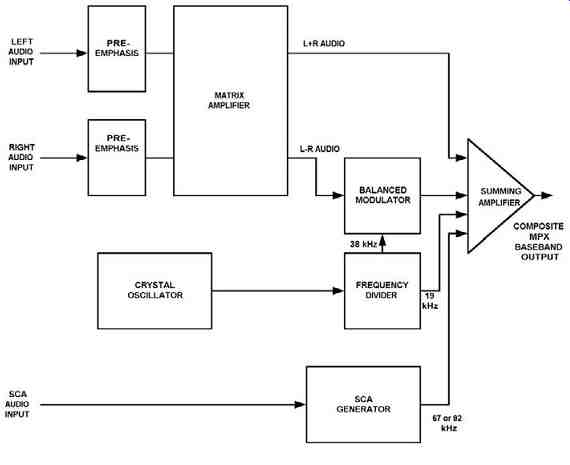
FIG. 2 Block Diagram of an FM Multiplex Generator
Indeed, there once existed an IC that did the whole job (BA1404 or BA1405), but this IC has suffered the fate common to many ICs-manufacturer's discontinuance.
For some hobbyists and low-power transmitter manufacturers, this is grim news. The folly in depending on specialized LSI chips that are not second-sourced by at least two other manufacturers is well illustrated here. Thousands of hobbyists' stereo FM transmitters both in kits and individual projects were constructed around the BA1404/BA1405 ICs. Although they may be available in surplus for a few years, their future is doubtful because little mass-market demand for these chips exists.
They were fine for low-end uses, but real FM stereo demands performance and signal-to-noise ratios well beyond the capabilities of these chips. We show a circuit of a stereo generator using the BA1405 chip for illustrative purposes only ( FIG. 1); however, it is not difficult to build a much better stereo generator using discrete transistors and a few "classic" IC devices that are widely available from several manufacturers, together with a handful of resistors and capacitors, that will give "broadcast quality" stereo sound to a low-power hobby transmitter. In addition, all waveforms are accessible for study and learning how the stereo system works.
The stereo generation process (see FIG. 2) is as follows: The two input channels L and R are first fed to a preamplifier, where the audio is amplified and pre-emphasized. This means that higher frequencies are boosted relative to lower frequencies by a controlled amount. This is done as a means of improving the signal to-noise (s/n) ratio of the received audio. In the receiver, exactly the opposite is done (de-emphasis), which reduces high-frequency receiver noise and produces an overall improved s/n and therefore "cleaner" high frequencies. A simple RC lowpass filter circuit is used for this task, and it may be either a distinct RC circuit or incorporated into the frequency response of one of the audio stages. In U.S. FM practice, a single 0 at 2.1 kHz, corresponding to an RC circuit time constant of 75 microseconds, is used. Therefore, below about 1000 Hz, no alteration is made to the audio.
At 1 kHz, a boost of around 1 dB occurs; at 2.1 kHz, a boost of 3 dB; and at 4.2 kHz, a boost of 7 dB is used, and so on at 6 dB/octave until 15 kHz. The audio is then limited in amplitude by a limiter, generally a diode peak clipper, to protect against over-modulating the transmitter. This is done for both L and R channels. Pro gram input should be limited in frequency to 15 kHz to avoid artifacts and aliasing effects and to make the job of the lowpass filter easier in reducing these effects. The stereo generation process assumes that no input frequencies above 15 kHz are present. Next, a lowpass filter is used to reduce audio components above 15 kHz both input and those resulting from any clipping. In some (European) systems, a preemphasis time constant of 50 microseconds, corresponding to a 0 at 3.15 kHz, is used instead of 2.1 kHz.
Next, the processed audio channels are added and subtracted algebraically in a matrix amplifier circuit. The (L+R) and (L-R) signals are now generated. The (L+R) signal is the main component of the "baseband" signal and is fed to a summing amplifier, where it is combined with other components (to be discussed later). The output of this summing amplifier is fed to the transmitter audio input.
The difference (L-R) signal must be separated in frequency from the (L+R) signal to keep them separated while being transmitted on the same channel. This is done by transforming the (L-R) signal into a double sideband (DSB) suppressed carrier AM signal at a frequency high enough so its lowest frequency components are far above the highest frequency components in the main L+R signal. A balanced modulator circuit is used for this operation (see FIG. 3). A carrier frequency of 38 kHz has been standardized for this purpose, and a pilot signal of half this frequency at 19 kHz is also generated. The pilot signal can be doubled at the receiver and used to generate a local 38-kHz signal for demodulation of the subcarrier into L-R audio, and it can be used to signify the presence of stereo audio. The pilot carrier is also used by some receivers as a signal to switch from mono to stereo and back to mono if the pilot at 19 kHz falls below a minimum level, indicating insufficient signal for good stereo reception.
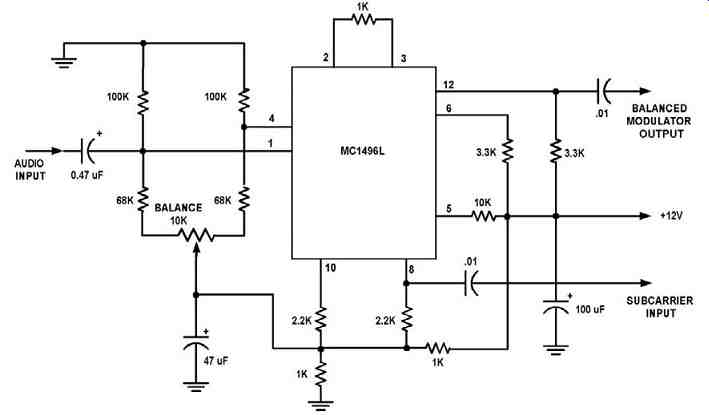
FIG. 3 Balanced Modulator Circuit Using an MC1496L
For TV stereo audio, 31.468 kHz and 15.734 kHz, which are two times and one times the horizontal scan frequencies, can be used if the audio response is limited to about 12 kHz or so. A DSB suppressed carrier signal is used because if a standard AM signal were used, the carrier at 38 kHz would "hog" a large part of the allowable deviation of 75 kHz total permitted. This reaction would reduce the available deviation for the sideband components, which really carry the desired audio information for the FM, reducing the s/n ratio and contributing a filtering problem in getting rid of the carrier component at 38 kHz, while keeping the higher frequency audio components at 10-15 kHz relatively "clean." The audio out of the balanced modulator has components from 23-53 kHz. This corresponds to the sum and difference of the audio components at 0-15 kHz with the 38-kHz subcarrier (which is suppressed). This signal, along with the 19-kHz pilot signal, is fed to the summing amplifier.
The pilot carrier and the subcarrier frequencies must be held to close tolerances, preferably within 1 Hz or so. This requirement is not as bad as it sounds, about 52 parts per million (ppm) for the pilot carrier and 26 ppm for the subcarrier. Because the subcarrier is referenced to the pilot, the 52 ppm tolerance at 19 kHz can easily be held with a crystal-controlled oscillator. The 38-kHz signal can be generated and then divided by 2 to get the 19-kHz pilot. Although crystals for 38 kHz are available, they can be delicate and expensive. A crystal in the 2-6 MHz range is by contrast cheaper, more rugged, and easily available. Therefore, the best approach is probably to use a crystal in the MHz range and to use one of the CMOS divider chain chips available to divide the MHz frequency by a power of 2 to get 38- and 19-kHz signals.
This approach is used in our circuits to be described in another section. In these circuits, a 4.864-MHz crystal is used in an oscillator, and its frequency is divided by 128 to get 38 kHz and then again by 2 to get 19 kHz. Although the outputs from the divider are square waves, the balanced modulator used to generate the subcarrier needs a square wave anyway, and the pilot is inherently filtered by the bandwidth of the audio system. Only two common digital CMOS ICs are used in this circuit, and the cost is very low.
The output from the summing amplifier has the following spectral components:
1. The sum of the L and R channels (L+R) consisting of audio program components from 0 (actually about 20 Hz) to 15 kHz. This is the part received and used by mono FM receivers.
2. A pilot signal at 19 kHz of sufficient amplitude to produce around 10 percent of the total deviation permitted by the transmitter. This signal is used for stereo detection and for regeneration of the 38-kHz subcarrier at the receiver.
3. A DSB suppressed carrier signal having frequency components from 23-53 kHz, which carry the L-R signal needed by the stereo receiver.
4. Optionally, subcarriers at 57, 67, or 92 kHz used for data transmission, or for SCA programming for use by private organizations. These subcarriers generally have 7.5-kHz deviation and carry music or programming with audio quality similar to AM broadcasting.
Therefore, a transmitter that handles FM stereo must have modulation capability up to 100 kHz with reasonable flatness of frequency response. Ideally, frequency response should be flat with constant time delay versus frequency, which implies a linear phase response versus frequency. Distortion, both harmonic and intermodulation, should be kept low to avoid crosstalk and the production of unwanted spurious mixing products, which could cause interference with audio programming. These components may show up as noise, whistles, or loss of separation. Additionally, distortion on the transmission path between transmitter and receiver must be avoided as much as possible for best stereo reception. Multipath transmission effects that occur at VHF frequencies can cause severe distortion and ruin stereo reception. Antennas used with FM stereo transmitters and receivers must have adequate bandwidth (rarely a problem) and enough gain to ensure adequately received signal.
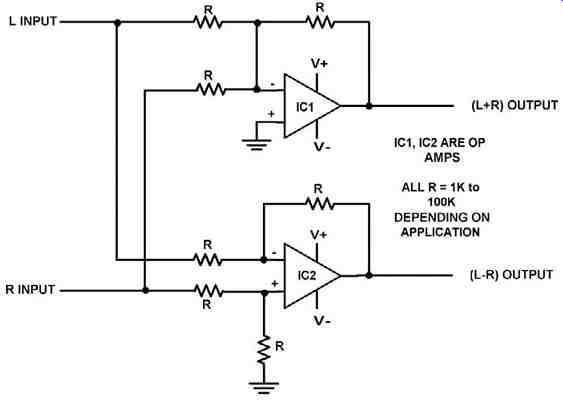
FIG. 4 Matrix Amplifier Used for Stereo Generation
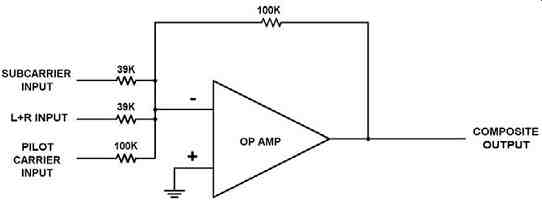
FIG. 5 Summing Amplifier Used for Stereo MPX Generation
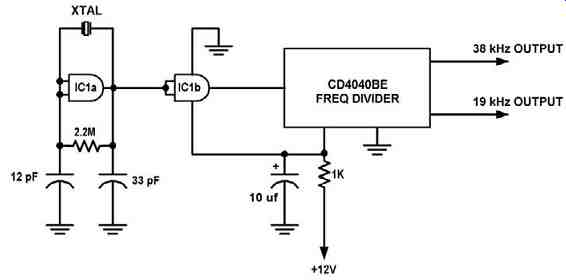
FIG. 6 Pilot and Subcarrier Generator FM Stereo Multiplex System
Some representative circuits are shown that can be used as building blocks in a stereo generator system such as that just discussed. Figures 4, 5, and 6 are typical of these systems. Complete systems are shown as parts of the MPX96 and MPX2000 discussions in later sections.
====